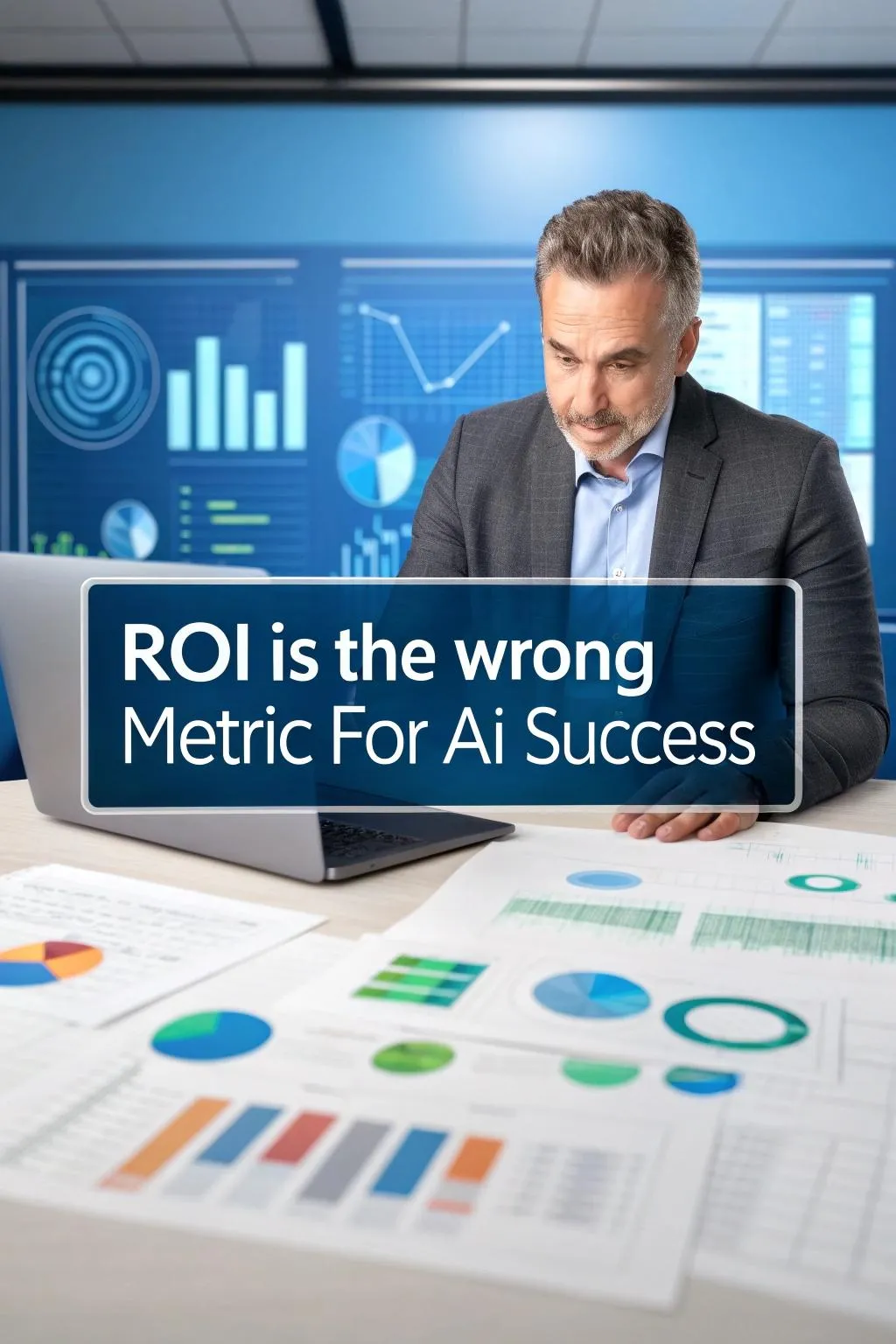
ROI is the Wrong Metric for AI Success - Here’s What to Track Instead
If you’re measuring AI success by ROI alone, you’re setting yourself up for failure.
Why? Because AI doesn’t work like a standard investment - it’s not a plug-and-play cost reducer. AI creates long-term value, operational efficiencies, and competitive advantages that don’t always show up in a simple ROI calculation.
And yet, many leaders continue to ask: “What’s the ROI on this AI initiative?”
In my opinion - that is the wrong question my friends.
The Problem with ROI as primary AI Metric
Traditional ROI metrics work for investments with clear inputs and outputs - spend X, and you get Y return. But AI is different:
➡ AI’s impact compounds over time - immediate returns often don’t often reflect its full potential - note even close.
➡ The biggest value comes from efficiency, innovation, and risk reduction - which are actually really hard to quantify in dollar terms.
➡ Poor AI adoption can kill ROI - if your team isn’t using AI effectively, which is in most cases - the numbers won’t look good - it is just the truth.
Focusing only on ROI leads to short-term thinking, causing many leaders to pull the plug on AI initiatives before they’ve even had a chance to iterate, and optimize to deliver real value. Which to be frank - AI demands this process to fully deliver in most cases. Being shortsighted to that fact only kills exactly what you are after.
So, what should you track instead, or in addition?
The Metrics That Actually Matter for AI Success
Instead of chasing a single ROI number, track these four key areas:
1. Operational Efficiency Gains
How much time and effort are saved by your team due to AI?
- Process automation - Reduction in manual tasks
- Faster decision-making - Insights generated in real-time
- Employee productivity - AI-assisted workflows reducing workload
Example: A marketing team using AI to automate reporting and content generation may not see direct revenue increases immediately, but they’re saving hundreds of hours, which frees them up for higher-value work.
2. Adoption & Usage Metrics
Is your team actually using AI effectively?
- Adoption rate - How many employees actively engage with AI tools?
- Usage patterns - Are they using AI for strategic work, or just basic tasks?
- Employee AI fluency - Are skills improving over time?
If AI sits on the shelf, ROI won’t happen. Measuring engagement, AI literacy, and evolution of strategic use ensures you’re building a strong AI-enabled workforce.
3. Business Impact & Innovation
Is AI driving new opportunities and competitive advantages?
- Revenue growth from AI-driven insights
- Customer experience improvements (faster response times, personalization)
- New business models or product innovations
Companies leveraging AI strategically aren’t just cutting costs - they’re creating new revenue streams and differentiating from competitors in ways that go beyond a simple ROI formula.
4. Risk Reduction & Compliance
How much risk is AI helping you mitigate?
- Fewer compliance violations through automated monitoring
- Better decision-making reducing costly errors
- Cybersecurity improvements through AI-driven threat detection
AI isn’t just about growth - it’s about protecting your business from avoidable risks.
The Bottom Line? AI’s Value Goes Beyond ROI.
Executives who fixate on ROI as the only measure of success are missing the point. AI delivers:
✔ Efficiency gains that free up human potential
✔ New opportunities that drive business growth
✔ Stronger risk management that prevents costly mistakes
✔ Strategic insights that enable powerful and proactive decision making
So, next time someone asks about AI’s ROI - shift the conversation. AI isn’t just about return on investment - it’s about return on intelligence, innovation, and impact.
Want to find out more about how you can leverage AI in your business? Contact me today.
